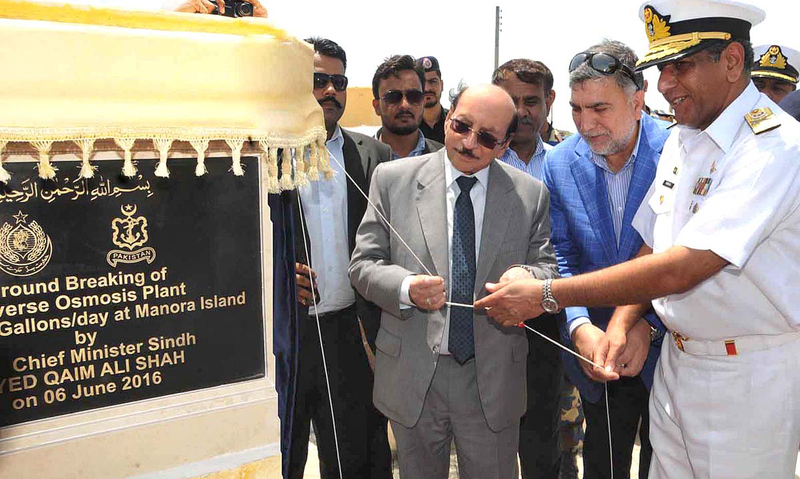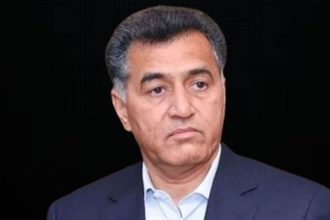Karachi: Sindh Chief Minister Syed Qaim Ali Shah on Monday visited the southern part of the port city and performed the ground breaking ceremony three different projects.
First he reached Younusbabad area in Mauripur, where he was received by high ranking naval officials including Commander Pakistan Fleet Vice Admiral Arifullah Hussaini.
At Younusbabad the Sindh chief minister laid foundation stone of the reconstruction of 1.7 kilometre long Younusabad Bridge and linked road at Hawksbay Y-junction.
The said project will cost Rs194.815 million and will be built by Karachi Metropolitan Corporation (KMC) in an estimated span of about six months, read a statement.
Soon after announcing the commencement of development work in Younusabad, Qaim Ali Shah was taken by the naval commanders to Manora where he laid the foundation stone of a 500,000 gallon (Reverse Osmosis) RO plant.
Here the commandant of Pakistan Naval Academy, Commander Fawad Amin Baig, briefed the Sindh chief minister that “Manora was a unique and historical island where fishermen community and Pakistan Navy lives together.”
“This RO plant would not only provide drinking water to naval housing society but it would cater to the needs of local population,” he said.
Qaim Ali Shah was then asked to inaugurate the “Reed Bed Sewerage Water Treatment Plant” installed by Pakistan Navy at Younusabad, where sewerage water was being treated in a natural way by passing it through chambers of gravels on which marsh grass was planted.
“These plants and gravel absorb toxic and poisonous contents of the sewerage water, making it useful for vegetation. Through this treatment Karachi can be turned green,” the chief minister was told.
Later the naval commanders gave Qaim Ali Shah a tour of picture gallery, which displayed pictures of Zulfikar Ali Bhutto and Benazir Bhutto when they had visited Pakistan Naval Academy (PNA) at Manora during their tenure as prime ministers.
The chief minister also visited PNA museum.
He said Pakistan Navy was playing an important role in developing the areas in near their installations and facilities, thus supporting the civilians in their education and other services.






